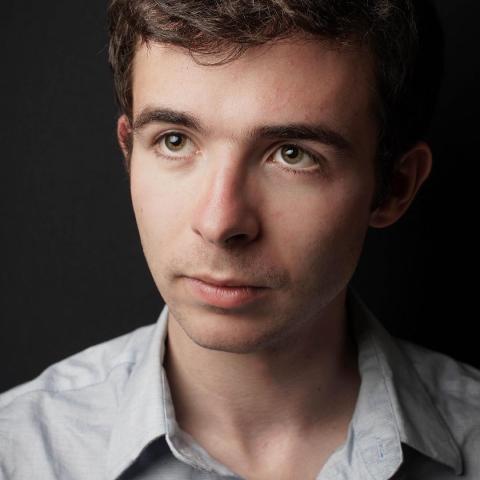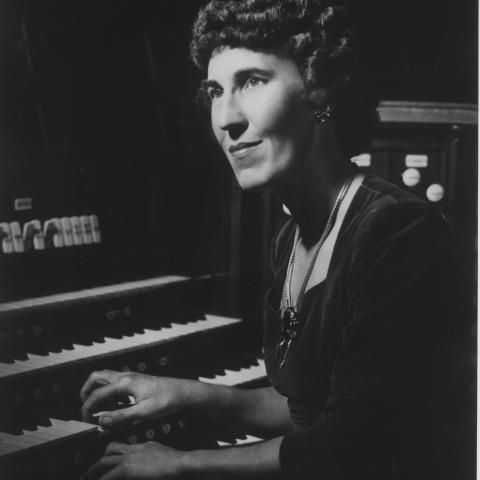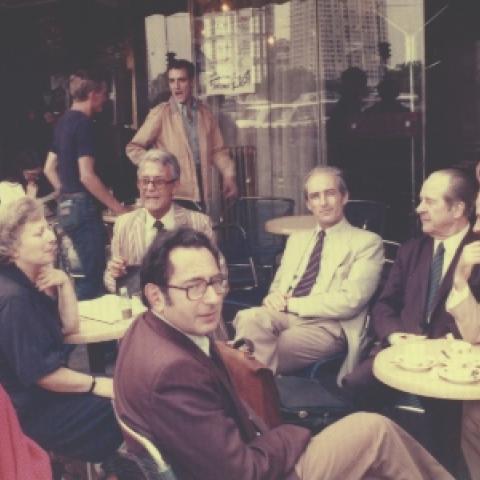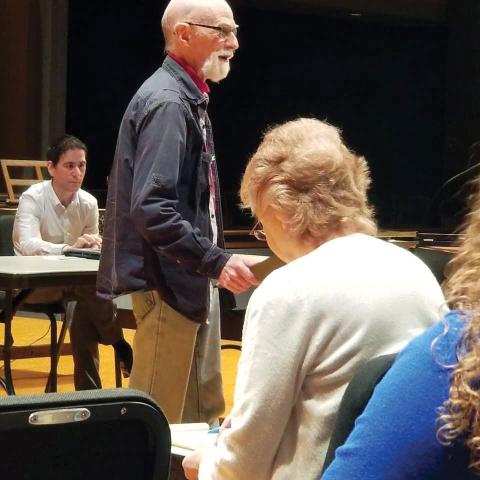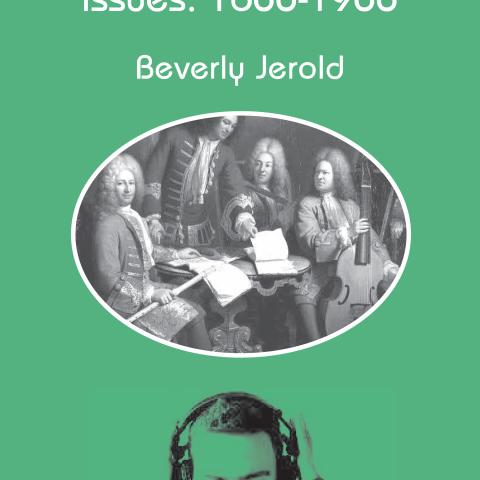
Le Clavecin Mythologique
Le Clavecin Mythologique is the title of L’Encelade compact disc EL 1801, the most recent recording by harpsichordist Anne Marie Dragosits playing the Pascal Taskin harpsichord from 1787 now in the Prof. Dr. Andreas Beuermann Collection of the Museum for Art and Commerce in Hamburg, Germany. Ms. Dragosits studied with Wolfgang Gluxam in Vienna and with both Ton Koopman and Tini Mathot at the Royal Conservatory in Den Hague (Holland). She currently holds the position of harpsichord professor at the Anton-Bruckner-Conservatory in Linz, Austria.
For this recording she has created a fascinating program comprising seventeenth- and eighteenth-century French music by Pancrace Royer, Jean-Philippe Rameau, François Couperin, Jacques Duphly, Jean-Henry D’Anglebert, and Antoine Forqueray—thoughtfully organized to form a narrative program based on ancient tales beginning with the sweet singer Prometheus and culminating with the king of the gods, Jupiter.
The playing throughout is musically satisfying, historically stylish, and technically agile. The instrument delights in each selection, and be sure to take the time to enjoy the seemingly endless reverberation as the musical bombast of Jupiter slowly dies away at the disc’s conclusion. This historic harpsichord’s resonance is nearly as long lasting as that of my own remarkable Richard Kingston Franco-Flemish double.
The historic harpsichord by Pascal Taskin is one of the builder’s reworkings of an even older instrument made by the Flemish master Andreas Ruckers. Taskin is usually credited with the invention of the Peau de Buffle stop for the harpsichord, just one of multiple attempts to add more dynamic possibilities to an instrument that was facing stiff competition from the newly popular fortepiano. The use of soft buffalo hide (thus the name) to stroke the strings rather than pluck them as did the usual quill plectra offered an additional gentle, quieter tonal possibility for music that seems to require it. Taskin also added pedals for changing the registers while playing, and he thus provided an historic example for the early twentieth-century revival instruments by Pleyel and the many other builders. Indeed, my 1968 harpsichord by William Dowd was the American builder’s penultimate two-manual instrument to be equipped with pedals for controlling the registers, and this instrument, like the Taskin, has four registers: 8′, 8′, and 4′ provided with the usual “quill” plectra (at this time replaced with plastic rather than bird-provided material), plus the added 8′ Peau de Buffle stop. I still own that instrument, but do not hear or use it very often since I placed it with a friend decades ago when I ran out of space in my spacious music room, as my inventory of keyboard instruments surpassed six widely varied examples. The Dowd may be heard, complete with buffalo hide, on my first Musical Heritage Society vinyl disc, The Harpsichord Now and Then, where it was particularly useful for the Busoni Sonata, one of the earliest compositions for the revival harpsichord. To hear such similar gentle tones on the current compact disc, reference Track 8: Royer’s La Sensible to be moved by five minutes of gently haunting music.
Editor’s note: see www.encelade.net or www.amazon.com to order the disc. Tracks are available for listening at www.youtube.com. For more information on Anne Marie Dragosits, visit http://dragosits.org.
A major instrument collection
The historic harpsichord featured on the compact disc and a recent rediscovery of an email sent from London to my partner Clyde Putman in July 2007 reminded me that I have been meaning ever since then to call attention to Alec Cobbe’s historic keyboard instrument collection housed at Hatchlands, an historic estate in Surrey.
Harpsichordist Jane Clark Dodgson arranged for me to perform the first of the two harpsichord recitals that I have been fortunate to play at London’s Handel House Museum—a truly memorable experience to make music on a beautiful Bruce Kennedy instrument in the very room where Handel composed his immortal oratorio Messiah. She also made arrangements for me to join Claire Hammett, an American harpsichord technician who served as tuner from “about 2000 to 2016” for the Alec Cobbe Collection at Hatchlands, as she drove to the National Trust House in Surrey to prepare an instrument for a recital.
Quoting from my email of July 12, 2007: Yesterday at the country house Hatchlands was far more exciting than we had planned: I was allowed to tag along on a demonstration given by the collector of the instruments, Alec Cobbe, for The Friends of Wigmore Hall. He is quite unique in that he not only purchases all these fantastic rare keyboards, but he is able to play them quite well, too. Among the early keyboard gems are a Bach-period clavichord (Hoffmann) and a virginal from Whitehall Palace (marked with the royal accession initials from Charles II’s time, so it was most likely tuned weekly by Henry Purcell). Other instruments include ones by Kirkman, Shudi, and the newest prize, a Ruckers made into an expressive double by Henri Hemsch, fully decorated and absolutely gorgeous in sound, just restored to its playing condition.
Got to play a bit on each of them. And you should see the place—statues everywhere (mostly plaster casts of Greek and Roman originals). A nice lunch with the Collection staff and the day’s recitalist Robert Wooley, and all this was followed by a wonderful extended drive with Claire down into the Surrey countryside . . . absolutely magical.
For a summer visitor to the United Kingdom, if one is interested in historic keyboard instruments, Hatchlands is not to be missed. The catalogue lists five harpsichords: Zenti, c. 1622; “probably English,” c. 1623; Andreas Ruckers, 1636, reworked by Henri Hemsch, Paris, 1763; Jacob and Abraham Kirkman, 1772; Burkat Shudi and John Broadwood, 1787. Also of interest: a virginal by John Player, 1664; a spinet by Ferdinand Weber, 1780; and a clavichord by C. G. Hoffmann, 1784. Other non-plucked keyboard instruments include two organs: a chamber instrument by John Snetzler, 1754, and a larger organ by J. W. Walker and Sons, 1903.
Cobbe’s interest in pianos that have composer-connections has led to at least 28 accessions, of which several highlights are the 1836 Graf owned by Gustav Mahler, and instruments known to, and sometimes signed by, such outstanding figures as Frédéric Chopin, Edward Elgar, Franz Liszt, Sigismund Thalberg, Charles Dibdin, and Jane Stirling. There is even a Zumpe square piano from the 1770s autographed by Johann Christian Bach.
The collection is open to visitors from April to October. Since the stately home serves as the private domicile for the Cobbe family, the hours for public viewing are limited from 2:00 to 5:00 p.m.
Claire Hammett
Since the October 2018 death of my partner Clyde, I have been at a loss when asked to suggest a tuner-repairer of harpsichords in the Dallas Metroplex. Thus, when I contacted Claire for information about her current status with such matters it was helpful to receive this information: Claire and her family have returned to the United States from London and now are settled in Florida, from whence she reports “few engagements as tuner/repairer.” However, she and her new Kevin Fryer harpsichord are scheduled for the Birdfoot Festival in New Orleans at the end of May, so she commented, “that is a proper job like I used to do six times a week rather than once in a blue moon.” She is also on the schedule of this year’s Historic Keyboard Society of North America (HKSNA) conference in Huntsville, Texas (May 12–15), where she will lead a workshop, “Introduction to Quarter-Comma Meantone Tuning” from 1:00–1:50 p.m. on the final day of the meeting. One could purchase a day pass and, if so moved or merely curious, also attend my 25-minute paper, “Scarlatti’s Cat in London, Vienna, and Texas” from 10:00–10:30 a.m. on the same day.
Claire also wrote that she is available to fly out to repair and refurbish harpsichords or tune for recordings or festivals (“birthdays, anniversaries, bar mitzvahs . . . whatever”). She may be contacted via email at keyboards415@gmail.com. More information is available on her website: www.harpsichordservices.com.

